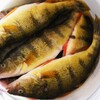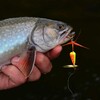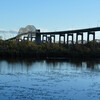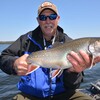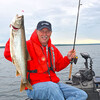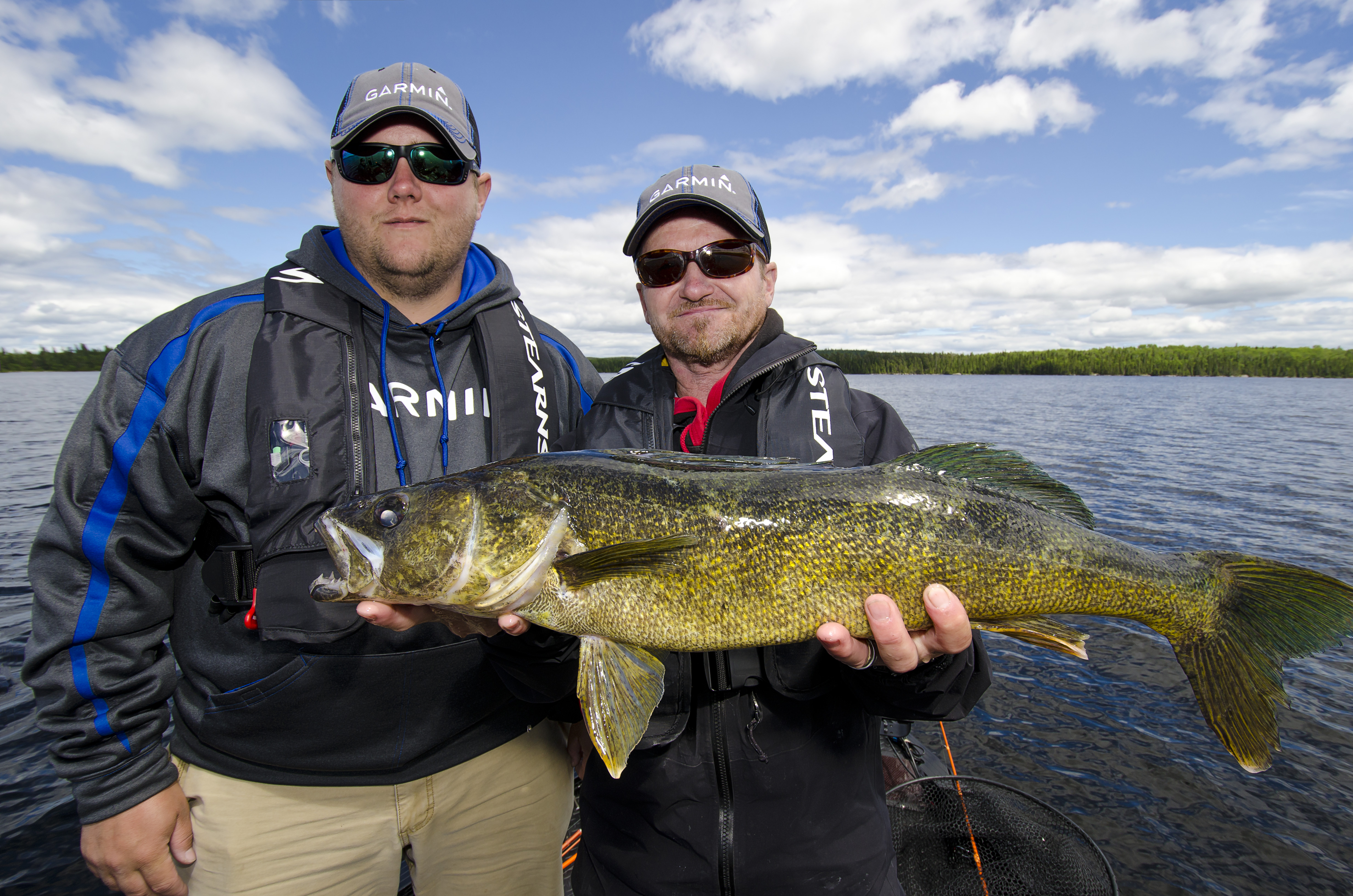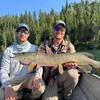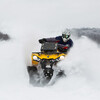
Northern Pike and the Spoon Bite
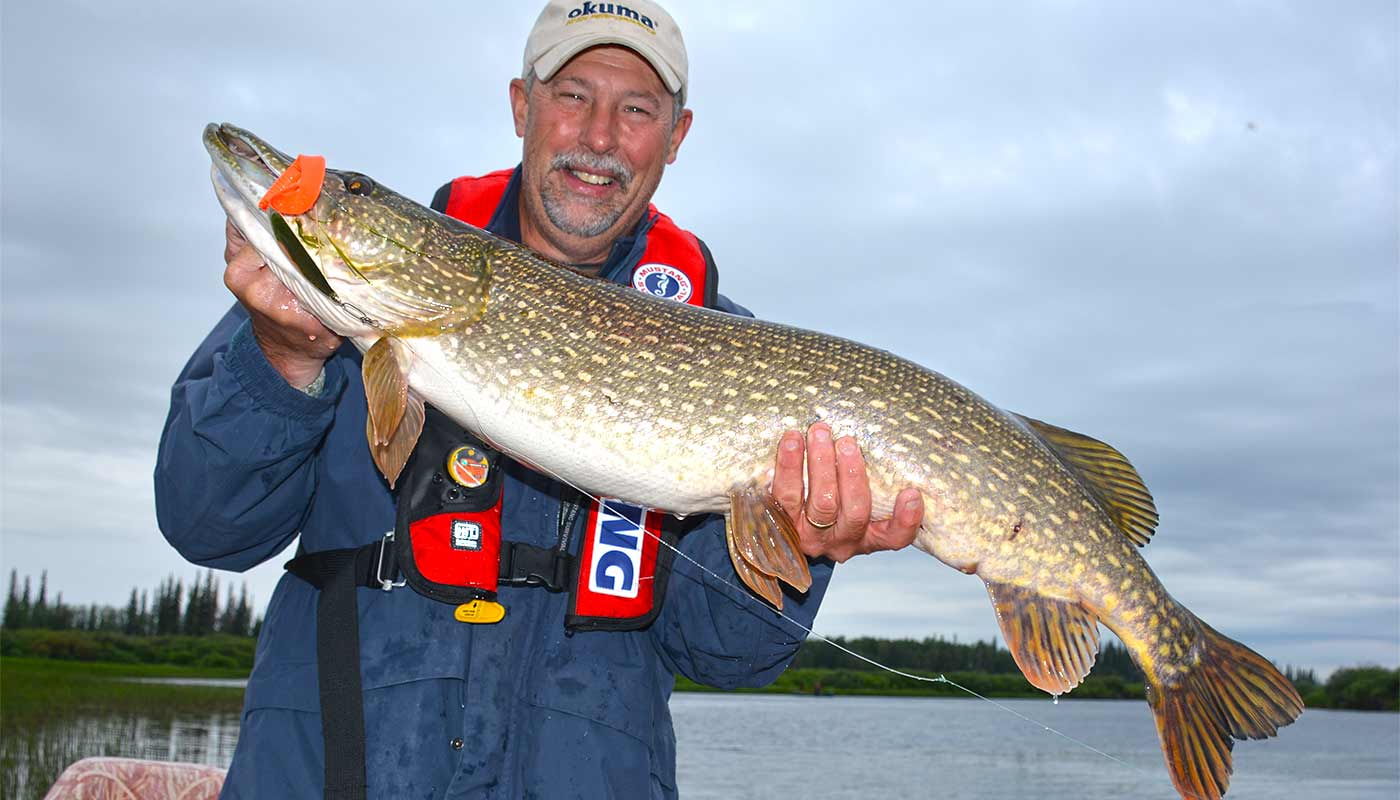
It’s interesting how certain fish become known to be susceptible to certain lures. Walleye are prisoners to the jig and minnow, trout can’t pass up an in-line spinner, smallmouth bass are powerless around a tube bait, and pike, well, pike have a thing for shiny spoons. All across Ontario’s Algoma Country, pike fishermen arm themselves with spoons and, for the most part, those anglers are successful. Spoons can be cast a long way, and that deadly combination of wobble and flash has been the undoing of countless pike, big and small.
Because pike have a reputation for getting weak in the presence of a casting spoon, anglers naturally gravitate in this direction. It’s true that spoons do a fine job of tempting pike into striking, but my experience with spoons suggests that these baits work best when fish are actively feeding.
The wobbling and flashing action of a spoon requires a steady and fairly fast retrieve speed. I commonly use a spoon as a searching tool because I can cast it a long distance and work lots of water quickly.
For every pike that slams a spoon, I typically notice several that follow the spoon with interest but don’t strike. These “follows” can be frustrating, but the information gained from a pike following and not striking is useful in a different way.
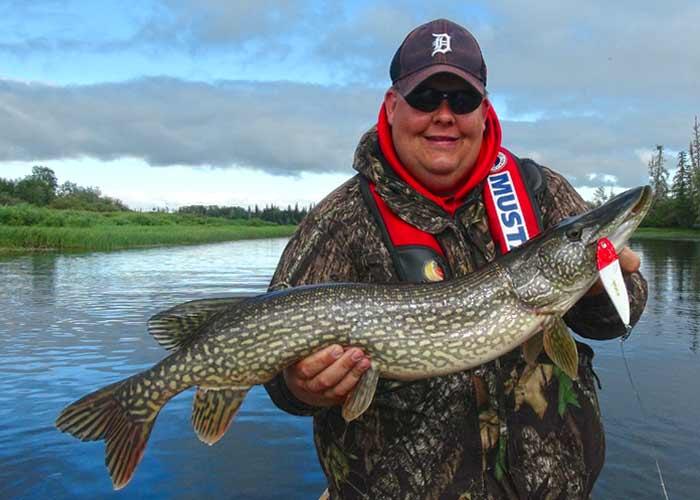
A big part of catching trophy pike is identifying the places they like to hang out. Big pike are territorial, and once they set up housekeeping in a geographic region, chances are that fish is going to be “on-site” for a while.
When a big pike follows my spoon and refuses to bite, I know where he lives and can start picking that area apart using other spoons or lure types. I also have the option of returning to the same spot later in the day and trying again.
One thing anglers have to understand about pike is that when they are lethargic, they aren’t going to bite much of anything. When, however, they decide to feed, they become so aggressive that it’s almost impossible to take the bait away from them! Being at the right place at the right time is everything in pike fishing.
Spoon Types
Before we can establish a spoon fishing strategy, we need to take a closer look at spoon designs. I categorize spoons into two groups: wide-open hook wobblers and narrow weedless versions. Good examples of wide wobblers are the Len Thompson, Lucky Strike Half Wave and Lindy Gator spoon. These spoons are fairly heavy and require a steady retrieve to keep them up off the bottom.
The second category of spoons is narrower in shape, with weedless single-hook designs aimed at casting right into dense patches of cabbage weed and other covers. In this category, the Johnson Silver Minnow is the go-to bait, but the Mepps Timber Doodle and Doctor Spoon are other good choices.
The wide wobblers can also be rigged weedless by removing the factory treble hook and adding a stout siwash single hook. Texas rigging a grub body onto this hook essentially converts these wide wobblers into weedless spoons. Eagle Claw also makes the 249WA a single hook with a weed guard, ideal for spoon fishing in weeds and wood.
Fast Or Slow
Because the wide wobblers are, on average, a little heavier, they must be fished fast using a steady retrieve. Pausing the retrieve, even for a few seconds, allows these spoons to quickly plunge to the bottom. Think of these spoons as search and destroy lures, because they can be cast amazingly long distances and used to cover water rapidly.
When casting one of these wide wobblers, keep a second rod handy and rigged up with a weedless spoon. Should a pike follow the wide wobbler, but not strike immediately, throw the weedless spoon into the same spot. Showing the fish something different, and a little different retrieve speed, is often all it takes to trigger a bone-jarring strike.
Because weedless spoons are a little lighter, they can be retrieved more slowly and allowed to periodically pause and flutter down. Adding a soft plastic action tail grub body to the hook on a weedless spoon makes the spoon sink even slower and generates an enticingly different action.
White, chartreuse and orange are the top colours for fishing spoons with soft plastic trailers. Plastics in the 4- to 6-inch sizes are ideal for rigging with both wide wobbling and weedless style spoons.

Change It Up
While a slow and steady retrieve often gets the most attention from pike, this retrieve style also yields a lot of “follows” that don't necessarily convert into strikes. Mixing up the retrieve cadence by pausing the retrieve for even a couple of seconds, twitching the rod tip and burning the retrieve creates a more erratic action.
Hang Up The Steel Leader
Pike fishermen are fond of using fishing spoons using steel or titanium leaders to prevent bite-offs. Wire leaders prevent bite-offs, but they also tend to deaden the natural wobbling action of spoons, especially at slower retrieve speeds or when pausing and fluttering the bait.
A heavy fluorocarbon line is more flexible and a very good alternative to wire leaders. Most anglers tie pike leaders using 18 inches of 50-, 65- or 80-pound fluorocarbon terminated to a barrel swivel on one end and a heavy snap on the other. I prefer to tie the fluorocarbon directly to my braid main line by using a double uni-knot. This creates a small knot that can be reeled into the tip-top, so I can cast without having a long leader protruding off the end of the rod.
Go Heavy Or Go Home
The other common mistake I see pike fishermen making is to arm themselves with rods and reels that are too light action for the job. I throw a bass fishing flippin’ stick equipped with an oversized baitcasting reel loaded with 65-pound test Maxima 8 Strand Braid.
I like 8 Strand Braid because it has body and shape like monofilament, which allows this line to load nicely on a baitcasting reel. Softer braids and fused lines tend to load poorly on the reel spool, causing the drag to stick when a big fish makes a power run.
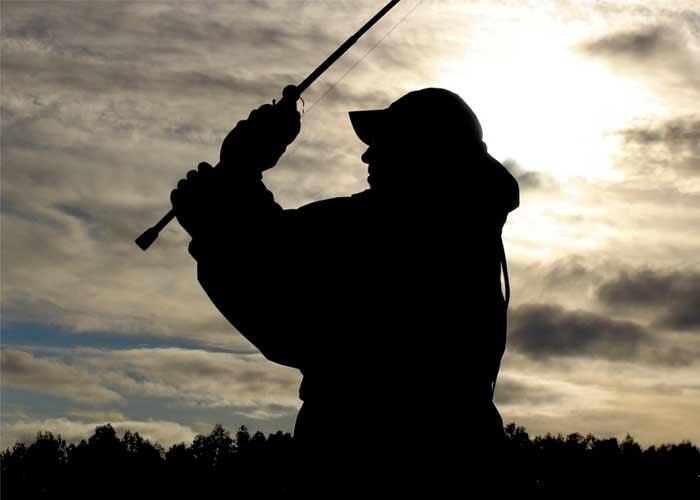
The author recommends casting heavy bait casting gear, 65-pound test 8 Strand Braid and 65- to 80-pound fluorocarbon leaders when targeting trophy pike on spoons. (Photo credit: Mark Romanack)
While this pike setup is clearly more rod, reel and line than is needed for the average pike caught in Algoma Country, I’m outfitting myself for the exceptional fish, not the average fish. Big pike north of that magical 40-inch mark are rare, and when I hook one, I want enough rod, reel and line to control that fish. Fishing with lighter gear, the fish has the upper hand and more often than not, the pike will tangle the angler in heavy weeds or wood and break off.
Anglers who aren’t comfortable casting with baitcasting gear can outfit themselves with heavy spinning tackle. Spinning gear designed for saltwater applications is ideal for pike fishing.
A Little Smells Good
A final piece of the pie when casting spoons for pike is to use natural fish scents designed to set up a scent stream in the water. Pro-Cure Super Gel is made using real forage fish, including smelt, alewives, shad, herring, shiners, etc. This scent is a paste that sticks nicely to hard baits like spoons and stays on the lure, delivering enticing scent for up to 30 minutes per application.
Applying natural fish scent helps to attract fish, but it also covers unnatural scents like insect repellent, sunscreen, fuel and tobacco odours. Adding a little smell-good to pike baits is an easy way to trigger a few extra bites every day on the water.
Recommended Articles

The Group of Seven in Algoma

9 Facts to Know about the Agawa Canyon Tour Train



